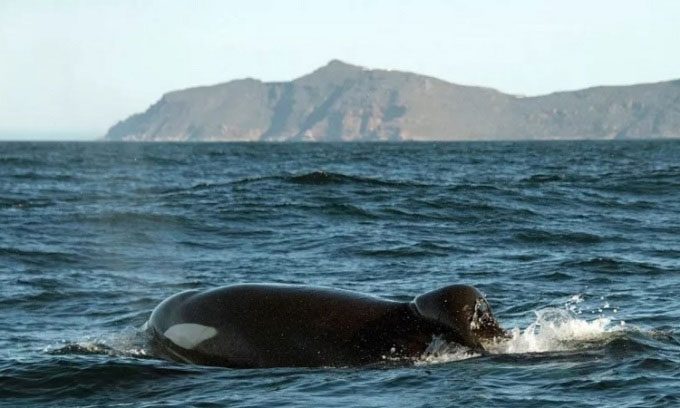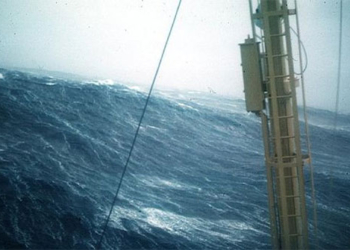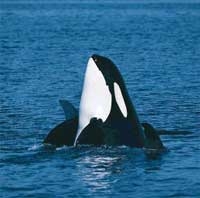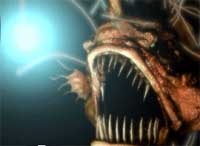Killer whales hunting great white sharks often tear apart their prey by biting down hard on their pectoral fins, according to the owner of a tour company that has been monitoring this predator species for several years.
David Hurwitz, owner of Simon’s Boat, encountered two killer whales that specialize in hunting great white sharks on January 16. The pair of killer whales named Port and Starboard appeared in the False Bay area off the coast of Western Cape, South Africa. Their offshore activity in Western Cape began in 2009, and they started hunting sharks a few years later.

One of the two killer whales, Port and Starboard, swimming off the coast of Western Cape. (Photo: David Hurwitz)
“Local divers discovered the carcasses of seven-gill sharks and bull sharks. All of them had long, surgical-like slashes along their bellies, between the pectoral fins. Their livers had been removed through these cuts. Initially, researchers believed fishermen were to blame for using liver as bait. However, what concerned the divers was that all the remaining bull sharks had left the area.”
When Hurwitz and scientists in the False Bay area began to study the behavior of the killer whales and their impact on the sharks in the region, they found a correlation between their presence and the number of shark carcasses washed ashore with repeated wounds. Researchers believe that Port and Starboard intentionally target sharks for their livers as a delicacy. “Each visit, they follow the same route around the bay, through areas with high shark density,” Hurwitz stated.
Dr. Alison Kock examined the carcasses of recently deceased sharks and previous examination photos. He discovered bite marks from the killer whales on the pectoral fins of the sharks. “The mystery of the sharks has been solved! The technique used by killer whales is to bite the pectoral fins and tear apart the prey to obtain the liver, which is the largest and most nutrient-rich part of the shark,” Kock explained.
Initially, killer whales targeted smaller species such as seven-gill sharks. However, in 2017, they began to shift to larger prey, specifically great white sharks. That year, five great white sharks washed ashore in the Gansbaai area with wounds similar to those found on bull sharks in False Bay. Dr. Ali Towner, who conducted the examinations, concluded that the culprits were the killer whales.
The number of sharks in False Bay has significantly decreased since the killer whales began hunting them. Before 2017, hundreds of sharks would visit the bay each year. By 2021, only a few instances were recorded. The decline in the great white shark population off the coast of Western Cape is linked to the presence of killer whales and their hunting capabilities.





















































